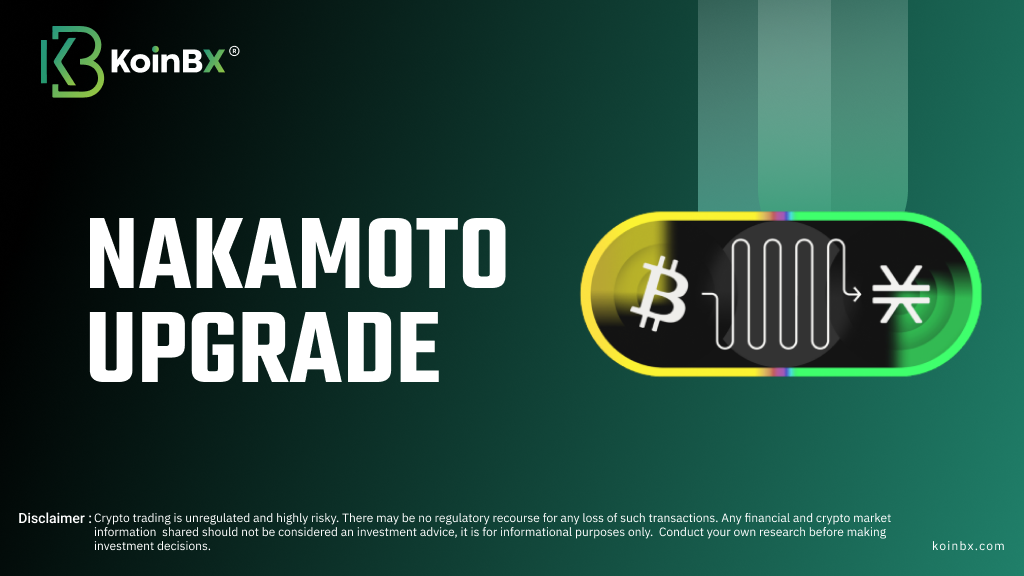The Stacks (STX) network, a layer-2 solution for Bitcoin, is on the brink of one such significant transformation with the Nakamoto Upgrade. This eagerly anticipated update promises to make the network faster, more secure, and primed for future innovations. But what exactly is the Nakamoto Upgrade, and why does it matter? Let's dive in.
The Need for Change
To understand the Nakamoto Upgrade, it’s helpful to first grasp the limitations of the current system. The Stacks blockchain has traditionally relied on Bitcoin’s block production rate, which averages about 10 minutes per block. This tie-in has caused several issues, including slow transaction confirmations and the risk of network forks. Forks in the blockchain, where different versions of the chain split and compete, can disrupt on-chain applications and lead to inconsistent data.
Moreover, the existing block production process on Stacks, driven by a miner selection method known as sortition, has led to some inefficiencies. Miners compete to append blocks, but the process is slow and can be easily manipulated by those with more resources, leading to unfair advantages and delayed transactions.
Enter the Nakamoto Upgrade
The Nakamoto Upgrade aims to tackle these challenges head-on, introducing a host of improvements that will make the Stacks network more efficient and robust. Here are the key changes:
Faster Block Production: One of the most exciting aspects of the Nakamoto Upgrade is the decoupling of Stacks block production from Bitcoin’s block time. With this change, the time it takes for a transaction to be confirmed on Stacks will drop from around 10 minutes to just a few seconds. This improvement is expected to boost transaction speeds by a whopping 120 times, making the network far more responsive.
Enhanced Security with Bitcoin Finality: Security is a top priority in any blockchain network, and the Nakamoto Upgrade ensures that transactions on Stacks are as secure as those on Bitcoin. With 100% Bitcoin finality, once a transaction is confirmed, it becomes nearly impossible to reverse, much like Bitcoin itself. This makes the Stacks blockchain more resilient against potential attacks or reorganization attempts.
Reduced Miner Extractable Value (MEV): The upgrade also addresses issues related to Miner Extractable Value (MEV), where miners could previously manipulate transaction orders for their benefit. By altering the sortition algorithm, Nakamoto ensures that Bitcoin miners no longer have an unfair advantage as Stacks miners, promoting a fairer and more competitive environment.
Also Read: What is Ethereum Dencun Upgrade
New Capabilities and Use Cases
Beyond these improvements, the Nakamoto Upgrade sets the stage for exciting new developments on the Stacks network:
sBTC: One of the most anticipated features following the upgrade is the introduction of sBTC, a programmable Bitcoin asset. sBTC will allow users to bridge their Bitcoin to the Stacks network in a decentralized manner, unlocking new possibilities for Bitcoin DeFi (Decentralized Finance) and other innovative applications.
A Broader Bitcoin Economy: With faster and more secure transactions, the upgrade paves the way for a broader Bitcoin economy. Developers and users can now build more complex applications without compromising Bitcoin’s integrity, expanding the utility of Bitcoin beyond its original scope.
Future Research and Growth: The Stacks Foundation has big plans post-upgrade, including improving interoperability with other blockchains and fostering the growth of decentralized applications. Additionally, they are exploring new areas of research like BitVM, a computational framework that could bring even more capabilities to the Bitcoin ecosystem.
Also Read: Everything You Need to Know About the "Ethereum ETF Approved by SEC"
Final Thoughts
The Nakamoto Upgrade marks a significant milestone for the Stacks network. By addressing key issues such as slow transaction times, potential security vulnerabilities, and unfair mining practices, the upgrade positions Stacks as a more efficient, secure, and innovative platform. As the network moves towards the full implementation of this upgrade, users and developers alike can look forward to a faster, more reliable, and versatile Stacks blockchain, opening up new horizons in the world of Bitcoin-based innovation.
If you're a developer eager to explore new possibilities or a user looking for a more seamless experience, the Nakamoto Upgrade is set to make waves in the blockchain community. Keep an eye on this space, as Stacks is just getting started with its ambitious plans for the future.
Download KoinBX Android App | Download KoinBX iOS App
Disclaimer: Any financial and crypto market information shared should not be considered investment advice. It is for informational purposes only. Conduct your own research before making investment decisions. Crypto trading is unregulated and highly risky. There may be no regulatory recourse for any loss of such transactions.






Comments